Deep Learning Project Repository
10 December 2015 7:53pm
9 October 2016 12:12am
Wildbook / IBEIS. Open-source effort to combine web-based mark-recapture database with ML/CV photo detection and identification. http://wildbook.org
[ Full disclosure: I am a member of the non-profit team working on this project! ]
2 September 2017 7:40am
Hypraptive and Brown Bear Research Network collaboration to develop a deep learning, brown bear face identification system: BearID Project.
[Disclosure: I am a member of hypraptive, and maintain the hypraptive blog]
Anonymous SMS
3 April 2017 7:38am
13 April 2017 2:42pm
Hi Will,
We are collaborating with WCS, San Diago zoo and the Wildtrack team from last year's zoohackathon to build a similar solution to the one you describe. The solution uses Twilio and you get a full overview of the work already built here: https://devpost.com/software/wildtrack
It would be good to share requirements and see if there is a way the Wildtrack solution can work for your needs. We would love to work with you to understand your full set of requirements and see if these can be accommodated.
If this is of interest please do drop me an email at sophie.maxwell@zsl.org. I will also be out in Kenya from 25th April for two weeks, so if you'd like to meet we can hopefully do this face to face.
Sophie
15 August 2017 4:50pm
Hi all
I'd be interested to hear if there were any updates on the discussion above. We @marianneteoh are looking at establishing informant networks for reporting illegal fishing and marine wildlife trade and a means of anonymous reporting would be incredibly useful.
Thanks in advance,
Kate
29 August 2017 5:27pm
Hi Kate,
At ZSL, we're continuing to work with the WildTrack team on their solution - now named SmartSkout. We've just had an article published on the Guardian about the project https://www.theguardian.com/vulcan-partner-zone/2017/aug/22/new-app-enable-citizens-report-poaching-real-time
We're currently focussed on producing the MVP for terrestrial SMART sites but we'd be very interested to hear more about your work establishing informant networks to see what potential there is for broader applications of the technology in the future. Feel free to connect with me at rachael.kemp@zsl.org
Best
Rachael
MIT's SLOOP: machine learning (ML) animal image recognition
27 July 2017 2:04am
27 August 2017 7:20am
It looks like they haven't updated for a couple of years do you know if it is still active or are they changing to a different system like tensor flow?
New paper on using drones in challenging environments
24 August 2017 9:04am
24 August 2017 4:57pm
Excellent - started reading this yesterday. This is a very timely and pertinent paper. Thanks for sharing.
Drone Tracker
23 August 2017 6:47am
24 August 2017 2:54am
Hi Lot,
Thank you for your input. Currently we are the end user instead of developer. That means, we are still using commercial drone like DJI series. However the link that you give absolutely useful for our upcoming innovation plans.
Since we still using commercial type quadcopter, I'm looking for stand alone tracker that work as seperate system from the drone. In other words, this tracker will not be affected should the drone system crash.
So far me and my team come across this device
http://www.dronesmadeeasy.com/Marco-Polo-Drone-Tracker-RF-Recovery-p/marco_polo_1.htm
Unfortunately, the radio signal frequency range so far not approved by Malaysian authority. So, I'm looking for other option.
Anyone in this forum have other option/ opinion?
Regards,
Mazidi
24 August 2017 6:51am
Hi Mazidi,
A couple of options;
- Marco Polo. http://eurekaproducts.com/rc-model-tracking-and-recovery/
I know of people who have relocated their machine using this device.
- Conventional VHF for wildlife tracking. old but solid technology.
Also have a look at commercial / open source devices used for model rockets.
regards
MJ
EDIT: I see that you have already identified Marco Polo.
24 August 2017 1:15pm
Hi Mazidi, all the systems that I recommended are separate systems with their own GPS, not connected to the drone.
Just the last one was the only finished product.
Good luck. Please tell us if you found something good and cheap!
Thermal cameras and wildlife
26 July 2017 6:51pm
26 July 2017 8:33pm
Oh, cool! It'd be interesting seeing if it could be used for tracking as well. I've used some handheld cameras and looked at footprints, but those disappeared pretty quickly.
21 August 2017 12:17pm
Abstract here from the IMC Congress in Perth, they found the higher-res versions are much better than the less expensive (e.g. iphone) versions when it comes to finding animals.
Now you see me: How thermal imaging increases detection of cryptic nocturnal mammals in tropical regions
Avril Underwood1 , Mia Dehre-Miller2 1. James Cook University, Smithfield, Queensland, Australia 2.
University of Lancaster, Lancaster, United Kingdom Accurate measures of species abundance and distribution underpin effective wildlife management and conservation strategies. Obtaining these data is very challenging when researching the cryptic nocturnal arboreal mammals of in the dense forest of the Wet Tropics. Our research shows that using a hand-held thermal imager significantly increases the detection rate of all mid-sized arboreal mammals when compared to the most commonly used method of spotlighting. We determine the optimal environmental and mechanical parameters for thermal imaging, and we investigate ‘cost-versus-result’ of hand-held imaging devices currently available on the market. We suggest that hand-held thermal imaging is a great emerging technology for cryptic arboreal mammal detection across tropical forested regions and beyond.
21 August 2017 12:20pm
My own experience is with the FLIR iphone attachment, just informal testing, but hasn't been that great at finding animals. I also think it would work better in the early AM. In the evening there can still be a lot of rocks and trees still warm from the sun.
Developing small (>2g) low power proximity loggers
18 August 2017 11:57am
Update on camera trap tests with real animal targets
17 August 2017 1:24pm
Wildlife Crime Tech Challenge: Protecting songbirds with the power of citizen science
17 August 2017 12:00am
SMART at IMPAC4 in Chile - September 4-8, 2017
15 August 2017 7:30pm
Operation Ferdinand - a Predator and Livestock Conflict Prevention Video Game!
23 June 2017 7:07pm
18 July 2017 11:29am
HI Gabriela - I'm sorry I missed this. I'm excited to try it out and so awesome to see others making games for conservation.
Gautam!
11 August 2017 1:42am
Hi Gabriela, i`ll check the game. Very interesting!!
11 August 2017 9:04am
Thanks for all the interest everyone! My colleague Jaymie and I are so excited that people are checking out our game. Let us know if you have any questions or suggestions!
A first-person account of the capture of a tiger in Pilibhit: Four elephants and a bulldozer, as seen from a drone
10 August 2017 12:00am
International Marine Protected Areas Congress 2017
8 August 2017 3:32pm
EDX.org Data Science Courses
25 July 2017 2:38pm
Are you heading to Colombia for the SCB International Congress for Conservation Biology (ICCB 2017)?
18 July 2017 10:06am
22 July 2017 8:57pm
Hello to everyone following along with this thread! We having a #tech4wildlife happy hour this evening from 4:30pm:
EL BARÓN - Café & Liquor Bar
Cra. 4 #31-7, Cartagena, Bolívar, Colombia
+57 5 6643105
https://goo.gl/maps/tzD14zWRaFF2
Participants from the two tech workshops - the tech think tank and the camera trap workshop - are coming along, and anyone else is welcome!
steph
23 July 2017 2:18pm
Hi guys,
I'll be staffing the Miradi Software booth that Nick mentioned. So in case you don't make to any of the sessions, you can swing by our booth and ask questions, learn more about Miradi.org and MiradiShare.org and/or take part in our raffle to win free subscription for Miradi.
Looking forward to seeing you all real soon,
Felix
24 July 2017 2:41pm
hey Felix, great to hear from you! I'll definitely be popping by to find out more, thanks for sharing your booth details.
As there are two tech focused symposiums today, plus your event nick, we're going to have another happy hour this evening for tech folk. Our one on Saturday had ~40 people, and, from the feedback I've had, people really appreciated the chance to sit for a while and have proper ind conversations. So it seems valuable to host another one.
Tech Happy Hour
5pm Tonight
Plaza de la Santísima Trinidad
Map below
We also have a growing tech whatsapp group which is how we're coordinating a lot of impromptu meetups, so if you'd like to join just add me at +44 7702255269, and let me know who you are. It'd also be helpful if you told me a sentence about what you're working on so I have a bit of context to connect you into the group.
Looking forward to seeing old faces and meeting new ones. See you all soon
Steph


HWC Tech Challenge - Additional background reading + resources
3 July 2017 5:58pm
5 July 2017 11:32am
@SamWilliams highlighted another timely publication fresh off the press yesterday that might be of interest to folks looking into the Polar Bear case:
Polar bear attacks on humans: Implications of a changing climate
James M. Wilder, Dag Vongraven, Todd Atwood, Bob Hansen, Amalie Jessen, Anatoly Kochnev, Geoff York (@gyork), Rachel Vallender, Daryll Hedman, Melissa Gibbons
Understanding causes of polar bear (Ursus maritimus) attacks on humans is critical to ensuring both human safety and polar bear conservation. Although considerable attention has been focused on understanding black (U. americanus) and grizzly (U. arctos) bear conflicts with humans, there have been few attempts to systematically collect, analyze, and interpret available information on human-polar bear conflicts across their range. To help fill this knowledge gap, a database was developed (Polar Bear-Human Information Management System [PBHIMS]) to facilitate the range-wide collection and analysis of human-polar bear conflict data. We populated the PBHIMS with data collected throughout the polar bear range, analyzed polar bear attacks on people, and found that reported attacks have been extremely rare. From 1870–2014, we documented 73 attacks by wild polar bears, distributed among the 5 polar bear Range States (Canada, Greenland, Norway, Russia, and United States), which resulted in 20 human fatalities and 63 human injuries. We found that nutritionally stressed adult male polar bears were the most likely to pose threats to human safety. Attacks by adult females were rare, and most were attributed to defense of cubs. We judged that bears acted as a predator in most attacks, and that nearly all attacks involved ≤2 people. Increased concern for both human and bear safety is warranted in light of predictions of increased numbers of nutritionally stressed bears spending longer amounts of time on land near people because of the loss of their sea ice habitat. Improved conflict investigation is needed to collect accurate and relevant data and communicate accurate bear safety messages and mitigation strategies to the public. With better information, people can take proactive measures in polar bear habitat to ensure their safety and prevent conflicts with polar bears. This work represents an important first step towards improving our understanding of factors influencing human-polar bear conflicts. Continued collection and analysis of range-wide data on interactions and conflicts will help increase human safety and ensure the conservation of polar bears for future generations. © 2017 The Wildlife Society.
Happy designing!

24 July 2017 9:04am
Additional information on human-polar bear conflicts can be found in this article
Bird identification app needed
13 July 2017 5:52pm
19 July 2017 10:29pm
Have you already tried the Merlin Bird ID App (http://merlin.allaboutbirds.org/)? The photo ID works pretty well. You just need to take a picture of the the whole bird. For offline mode, you can download a regional "Bird Pack", such as "US: Southeast".
Regards, Ed
20 July 2017 9:06am
Dear Ed,
Excellent suggestion, thank you. We indeed need something as user-friendly as this. Right now they do not have all the right species for us (Eastern Europe/Middle East) but we could talk to them to see what is possible. Thanks again!
Fleur
20 July 2017 5:09pm
Hi Fleur,
I see now that the Merlin App bird packs are limited to North America. You could certainly contact the Cornell University Lab of Ornitology (http://www.birds.cornell.edu/) who develop the app. They may be interested in helping with such a problem.
Another option may be iNaturalist (http://www.inaturalist.org/). They have an app for logging nature observations. It is not limited to bird, but includes plants, animals, etc. They are currently adding a deep learning system to help automatically identify species from photos (currently around 10,000 species can be identified). I believe they give a top 10 possibilities. They use GPS location data from the proto or phone to provide localized suggestions. There's a demo web page here:
https://www.inaturalist.org/computer_vision_demo
According to their blog (https://www.inaturalist.org/pages/computer_vision_demo), they have integrated the computer vision module with their iPhone app. I don't think they have added it to their Android app yet. I have Android, so I have not tried the computer vision component from my app.
They may also have limited species for your area, however, the great thing about iNaturalist is that anyone can upload observations. I believe for the computer vision to be effective, they want to have at least 20 verified observations of a species by 20 different people before they add it to their model. The app is from the California Academy of Science. You may want to contact them to see if you can accelerate the process.
Best of luck!
Ed
Seeking collaboration and co-financing for PhD research: How land tenure arrangements impact upon illegal hunting in Sub-Saharan Africa
19 July 2017 11:19am
Seeking collaboration and co-financing for PhD research: How land tenure arrangements impact upon illegal hunting in Sub-Saharan Africa
19 July 2017 11:13am
Rhino Carpentry: The Making of Lola the Rhino in Augmented Reality
19 July 2017 12:00am
SMART 2016 Annual Report
5 July 2017 7:26pm
18 July 2017 1:10pm
Thanks for sharing this, Drew! We have a number of SMART focused case studies and articles in our Resources area that might also be worth checking out if you're considering using SMART in your work:
- The Spatial Monitoring and Reporting Tool (SMART) - Alexa Montefiore gave a nice introduction to SMART in this first overview article
- Video: Discover the SMART Approach - recorded in June 2016, this talk was presented by Barney Long (@Barney_Long ), Emma Stokes (@estokes ) , Jonathan Palmer (@jpalmer ) and Alexa Montefiore, this talk explains the origins of SMART, offers case studies of successful applications and outlines future development plans for the methodology. The session concludes with an interactive Q&A session, which offered the opportunity to delve deeper into the practicalities of implementing SMART.
- Getting SMART in Cambodia - In this talk, Kate West (@katewest ), Manager of our Marine Conservation Group, shares her key lessons learnt from implementing SMART in a marine context and dives deep into the limitations and considerations that need to be taken into account when implementing the SMART approach. This is a valuable talk for any team considering deploying SMART in a marine context.
Recommendations Needed: GSM Camera Traps
24 May 2017 1:42pm
10 July 2017 1:24pm
Hi Chloe,
I've had promising results with the Scoutguard MG983G-30M, and I believe a 4G version has just been released. The 3G version has some useful features, like two-way communication to change settings/get images and a audio call feature (which I haven't used). I'd be very pleased to hear how your tests go.
Cheers,
Rob
10 July 2017 4:04pm
Thanks everyone,
@TopBloke @Kai - I've not come across the Ltl Acorn ones - will take a look. So does that mean if it was purchased in the UK it would be locked to a UK SIM then? That might be problemativ as we tend to purchase here to test and set up before sending out when staff are heading back to the country of deployment.
@Rob+Appleby - That's good to know about the Scoutguard MG983G-30M too, thanks.
A supplier is going to send me a new model by the same people who make Scoutguard to test but he hasn't said what it is. Maybe it's the 4G one. Whatever it is if it is any good I will feed back on here
Chloe
10 July 2017 4:42pm
@@Chloe+Aust - pls google “ltl acorn uk”, you will get a lot info. No, no limited, just the company's sale rules. You could use it anywhere, but for example, if you wants to use it in kenya, you need a local sim card, such as safaricom... when you check photos from china, you will find most of them photoed by are ITI acorn. Panda,tiger, snow leopord, cloud leopard, leopard, golden cat....
Scoutguard is also a good china camrea traps. oldest company. only company have espano menu. but they are focus on US hunting market. not special for wildlife researching use.
The LOREDA is also good, the only brand focus on wildlife-bio researching camra traps in china. Might be do not have dealers/stock in uk.
From the Field: Developing a new camera trap data management tool
7 July 2017 12:00am
[ARCHIVE] Funding Opportunity: Leverage space technology for wildlife protection
6 July 2017 12:58pm
Funding Opportunity: Leverage space technology for wildlife protection
6 July 2017 12:57pm
Funding Opportunity: Leverage space technology for wildlife protection
6 July 2017 12:56pm
Funding Opportunity: Leverage space technology for wildlife protection
6 July 2017 12:55pm
Funding Opportunity: Leverage space technology for wildlife protection
6 July 2017 12:52pm
Learning and Training Resources for Remote Sensing - contributions welcome!
23 May 2017 11:55am
19 June 2017 2:37pm
I was just thinking along those lines. Yes, whatever you think would be the best structure for collating learning resources.
19 June 2017 2:50pm
We've had similar threads in other groups collating/crowd sourcing info - e.g. recommendations for gear like turtle satellite tags, GSM camera traps or tablets for field research, likewise for collecting a list of citizen science apps, and creating a respository of the different projects using deep learning. @jprobert works really hard to keep our formal resources area updated, but having a live thread as well draws one of the biggests benefits of having this community by enabling everyone to contribute.
Long story short, I think it's a good idea - if you get it started I'll share any resources I come across :)
6 July 2017 9:45am
Satellite Image Analysis and Terrain Modelling – A practical manual for natural resource management, disaster risk and development planning using free geospatial data and software.
This new manual is available to access as a PDF from https://sagatutorials.wordpress.com/training-manual/.
Website developers; engaging research to those working on the ground
1 June 2017 12:33pm
29 June 2017 7:58pm
Hi Kate try www.ushahidi.com based in Kenya.
I have no affiliation with them I have seen the work they do.
5 July 2017 2:48pm
Hello Baker,
What kind of website you are trying to create? Like do you just want to share research data to those organizations or is it just to share reports (as in complete report based on the data but the actual data are not shared) or is it something else? I think Vizzuality is a good option since they have background working with big data, I am not really sure about other firms that offered data science in their development works since not many firms offer that type of development.
Ting Wai







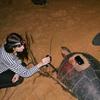


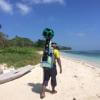

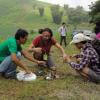


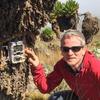
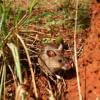


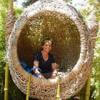









5 August 2016 2:38pm
NOAA Right Whale Recognition Competition, January 2016
364 teams | $10,000 prize
https://www.kaggle.com/c/noaa-right-whale-recognition
Competition Details:
With fewer than 500 North Atlantic right whales left in the world's oceans, knowing the health and status of each whale is integral to the efforts of researchers working to protect the species from extinction.
Currently, only a handful of very experienced researchers can identify individual whales on sight while out on the water. For the majority of researchers, identifying individual whales takes time, making it difficult to effectively target whales for biological samples, acoustic recordings, and necessary health assessments.
To track and monitor the population, right whales are photographed during aerial surveys and then manually matched to an online photo-identification catalog. Customized software has been developed to aid in this process (DIGITS), but this still relies on a manual inspection of the potential comparisons, and there is a lag time for those images to be incorporated into the database. The current identification process is extremely time consuming and requires special training. This constrains marine biologists, who work under tight deadlines with limited budgets.
This competition challenges you to automate the right whale recognition process using a dataset of aerial photographs of individual whales. Automating the identification of right whales would allow researchers to better focus on their conservation efforts. Recognizing a whale in real-time would also give researchers on the water access to potentially life-saving historical health and entanglement records as they struggle to free a whale that has been accidentally caught up in fishing gear.
From what I can gather, the winning solution was submitted by deepsense.io. They've written a full blog post about it here:
http://deepsense.io/deep-learning-right-whale-recognition-kaggle/